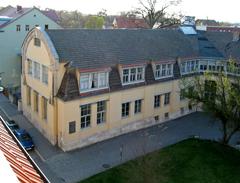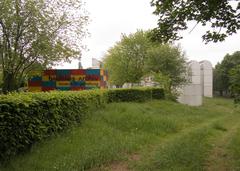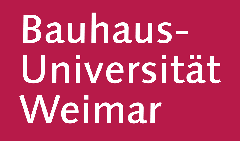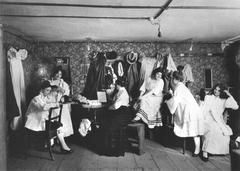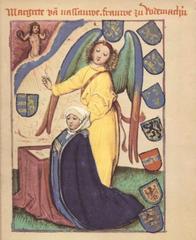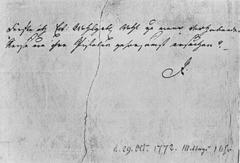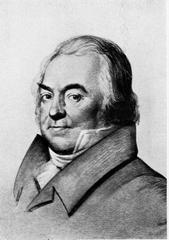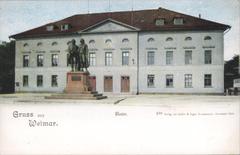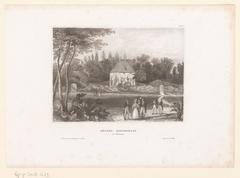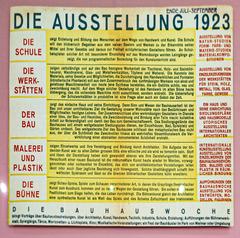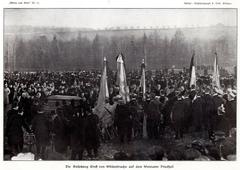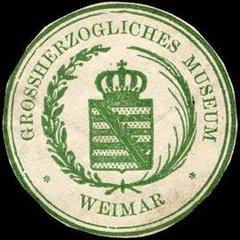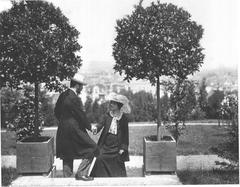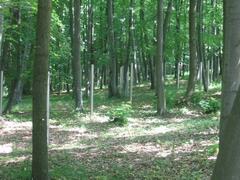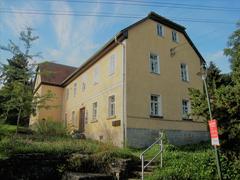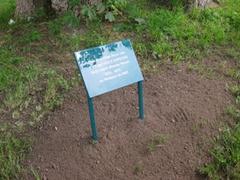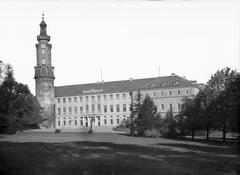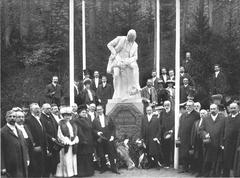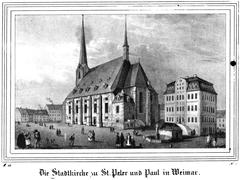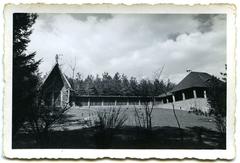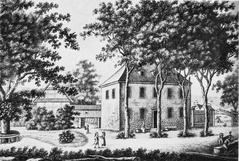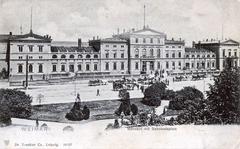
Visiting the Russian Orthodox Chapel in Weimar, Germany: Complete Guide & Tips
Date: 04/07/2025
Introduction
The Russian Orthodox Chapel in Weimar, officially known as the Church of St. Mary Magdalene, is a distinguished monument embodying the confluence of Russian and German history, faith, and architectural tradition. Situated within Weimar’s Historic Cemetery, this 19th-century chapel serves as both a significant cultural landmark and an active site of worship for the Russian Orthodox community. Whether you are drawn by its unique architecture, its poignant dynastic history, or its serene spiritual atmosphere, this guide provides everything you need to know for a rewarding visit—including historical context, architectural highlights, practical visitor details, and travel tips.
Table of Contents
- Historical Background and Origins
- Architectural Design and Features
- Spiritual and Cultural Significance
- Practical Visitor Information
- Nearby Attractions and Cultural Context
- Frequently Asked Questions (FAQ)
- Visual Resources and Media
- Conclusion and Recommendations
- Sources and Further Reading
Historical Background and Origins
The Russian Orthodox Chapel in Weimar was commissioned in the early 1860s as a burial chapel for Grand Duchess Maria Pavlovna of Russia, a granddaughter of Catherine the Great and a beloved patron of the arts in Weimar. Following her death in 1859, Maria Pavlovna’s desire to be interred according to Russian Orthodox rites was honored by constructing this chapel, specifically built upon Russian soil transported from the vicinity of St. Petersburg (Klassik Stiftung Weimar, Wikipedia).
The project was overseen by Carl Heinrich Ferdinand Streichhan, the Grand Duchy’s chief architect, with plans drawn up in Moscow to ensure liturgical authenticity (regiopia.de). The chapel’s consecration in 1862 symbolized not just personal devotion but a powerful union between Russian and German aristocratic and religious traditions.
A notable architectural feature is the sealed underground passage connecting the chapel to the Weimarer Fürstengruft (Ducal Vault), physically and symbolically uniting Maria Pavlovna with her husband, Carl Friedrich. This distinctive element underscores the chapel’s role as both a private memorial and a public monument (Urban Traces of Violence).
Architectural Design and Features
Exterior
The chapel is a striking example of Russian Revival architecture, characterized by its compact cross-in-square plan and prominent golden onion dome topped with an Orthodox cross. The brick façade features decorative arches, pilasters, and intricate cornices, with iconographic details and inscriptions in Church Slavonic at the entrance (Professor Carol). Despite its modest scale (approximately 11 by 9 meters), the chapel commands attention within the cemetery landscape.
Interior
Inside, the nave is oriented east-west, conforming to Orthodox tradition, and divided from the sanctuary by an iconostasis—an elaborately gilded screen adorned with icons of Christ, the Virgin Mary, and revered saints. The interior is richly decorated with frescoes, painted icons, and candle stands, utilizing vibrant reds, blues, and gold leaf to evoke the grandeur and spirituality of Orthodox worship. The atmosphere is further enhanced by the scent of incense and the glow of candlelight, especially during services.
Dome and Symbolism
The central dome is both an architectural and spiritual focal point, symbolizing the heavens and divine presence. Although smaller than those found on major Russian cathedrals, it is highly visible and often features traditional iconography, such as Christ Pantocrator. The dome’s placement above the sanctuary reinforces the link between the earthly and the divine (Wikipedia).
Underground Passage
A unique spiral staircase, now sealed, once led from the chapel to the Ducal Vault. This corridor allowed Maria Pavlovna and her husband to rest side by side, fulfilling her wish for both Russian burial customs and marital unity (Urban Traces of Violence).
Spiritual and Cultural Significance
Since its consecration in 1862 by Archpriest Stefan Sabinin, the chapel has served as an active place of Orthodox worship and a site of pilgrimage. It is especially significant for the Russian Orthodox community in Germany, offering regular liturgies and commemorations (Klassik Stiftung Weimar).
The chapel’s presence within the Historic Cemetery, a UNESCO World Heritage Site, enhances its role as a cultural bridge, representing the interconnectedness of Russian and German spiritual and artistic traditions. The juxtaposition with the neoclassical Fürstengruft and the proximity to the tombs of Goethe and Schiller further reinforce this cross-cultural dialogue (regiopia.de).
Practical Visitor Information
Location and Access
- Address: Historic Cemetery (Historischer Friedhof), Am Poseckschen Garten, 99423 Weimar
- Getting There: The chapel is easily reached on foot from Weimar’s city center or by public transport. It is located directly behind the Fürstengruft, with clear signage within the cemetery (Google Maps).
Visiting Hours
- Summer (April–October): 10:00 am – 6:00 pm
- Winter (November–March): 10:00 am – 4:00 pm
- Closed: Tuesdays
- Note: Last entry is 15 minutes before closing. Hours may vary for services or special events; check the official website for updates.
Tickets and Admission
- Adult: €5.00
- Reduced rate: €4.00
- Students (16–20, with ID): €2.00
- Children under 16: Free
- Tickets are available on-site. The Weimar Card (€32.50) offers 48-hour admission to most public museums and free public transport, providing excellent value for multi-attraction visits (annees-de-pelerinage.com).
Accessibility
- The chapel and cemetery paths are wheelchair accessible, though the underground passage is not open to the public. Visitors with limited mobility should contact the visitor center in advance for special accommodations.
Guided Tours and Services
- Guided Tours: Available in German by prior arrangement through the parish (ROK Weimar). Private English-language guides can be booked via local tourism offices.
- Religious Services: Orthodox liturgies and feast day services are held regularly. Visitors are welcome to attend but should observe customary etiquette (see below).
Visitor Etiquette and Tips
- Dress modestly and behave respectfully, especially during services.
- Stand or sit quietly at the back if observing a liturgy; do not enter the altar area.
- Non-flash photography is permitted outside services; always check with staff.
- Use a translation app or guidebook for non-German speakers, as English signage may be limited.
- Comfortable footwear is recommended due to uneven cemetery terrain.
- Restrooms and refreshments are available in the city center nearby.
Nearby Attractions and Cultural Context
Combine your visit to the Russian Orthodox Chapel with Weimar’s other major sites:
- Fürstengruft (Ducal Vault): Final resting place of the Weimar ducal family, as well as Goethe and Schiller.
- Goethe’s House and Museum: Explore the life and legacy of Germany’s literary giant.
- Schiller’s Residence: Delve into the world of the famed dramatist.
- Belvedere Palace and Park: Enjoy landscaped gardens and Baroque architecture (onlyingermany.com).
These landmarks together offer a comprehensive exploration of Weimar’s rich cultural and historical landscape.
Frequently Asked Questions (FAQ)
Q: What are the visiting hours for the Russian Orthodox Chapel?
A: Summer: 10:00 am–6:00 pm; Winter: 10:00 am–4:00 pm; closed on Tuesdays.
Q: How much is admission?
A: €5 for adults, reduced rates available, free for children under 16.
Q: Is the chapel accessible for wheelchair users?
A: Yes, the chapel and cemetery are accessible, but the underground passage is not open.
Q: Are guided tours available?
A: Yes, by prior arrangement in German; private English tours can be arranged.
Q: Can visitors attend services?
A: Yes, but please observe Orthodox customs and avoid disruption.
Q: Is photography allowed inside?
A: Usually, non-flash photography is permitted except during services.
Visual Resources and Media
- High-resolution photos and virtual tours are available on the Klassik Stiftung Weimar website.
- Suggested alt tags for SEO: “Russian Orthodox Chapel Weimar onion dome,” “Interior iconography of Russian Orthodox Chapel in Weimar,” “Golden domes Russian Orthodox Chapel.”
- Interactive maps and more media can be found via local tourism platforms.
Conclusion and Recommendations
The Russian Orthodox Chapel in Weimar stands as a remarkable testament to faith, dynastic history, and cross-cultural exchange. Its authentic Russian Revival architecture, poignant funerary role, and ongoing spiritual life make it an essential stop for anyone interested in Weimar’s historical sites. To maximize your experience:
- Check official sources for current visiting hours and ticket options.
- Pair your visit with other Weimar landmarks for a full cultural itinerary.
- Respect the sacred atmosphere, especially during religious services.
- Consider downloading the Audiala app for audio guides and up-to-date visitor information.
Plan your journey and immerse yourself in an extraordinary chapter of European cultural and spiritual history.
Sources and Further Reading
- Russisch-Orthodoxe Kapelle (Weimar) – Wikipedia
- Ducal Vault and Russian Orthodox Chapel – Klassik Stiftung Weimar
- Russian Orthodox Chapel Weimar – Professor Carol
- Russian Orthodox Chapel in Weimar – Regiopia.de
- Russian Orthodox Chapel Weimar – Urban Traces of Violence
- Visiting the Russian Orthodox Chapel in Weimar – OnlyInGermany.com
- Things You Should Know Before Visiting an Orthodox Church – OrthoChristianTools.com
- Annees de Pèlerinage – The 15 Best Things to Do in Weimar, Germany




